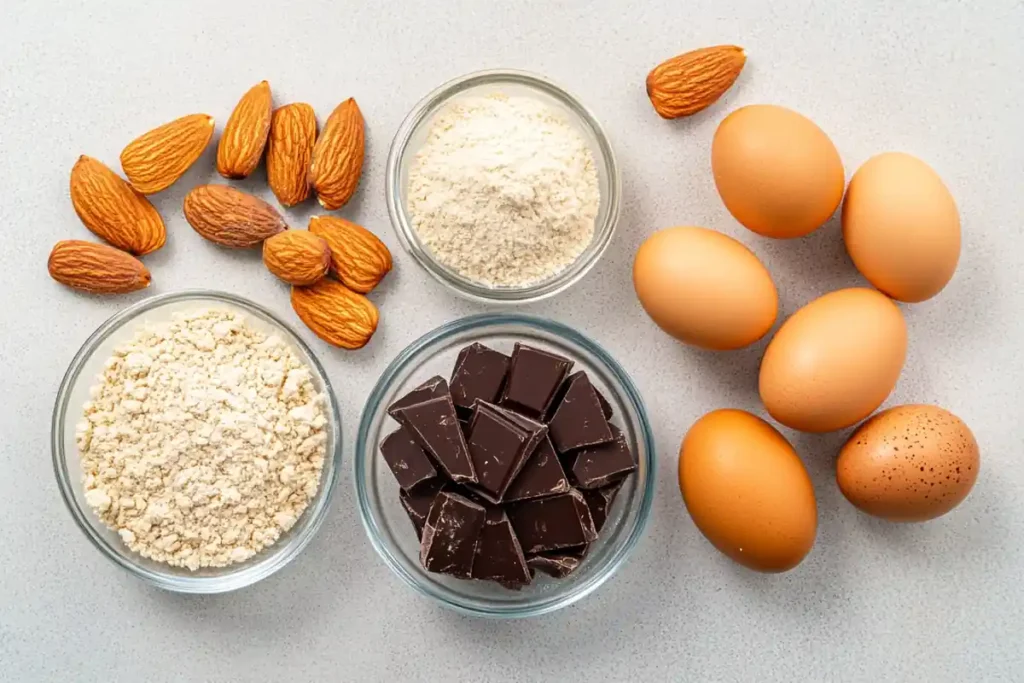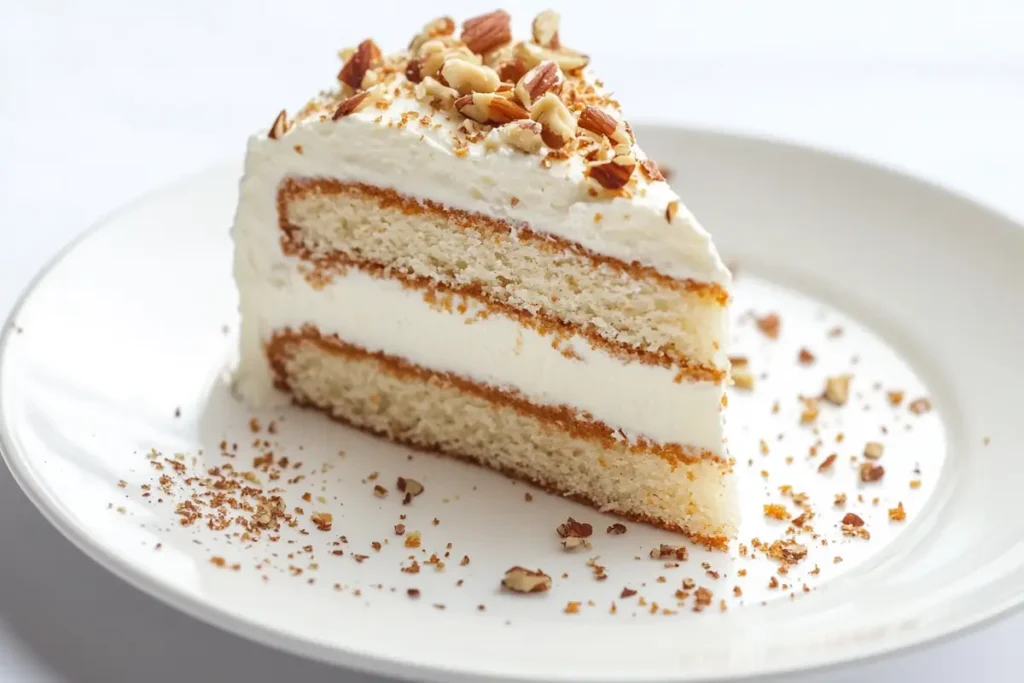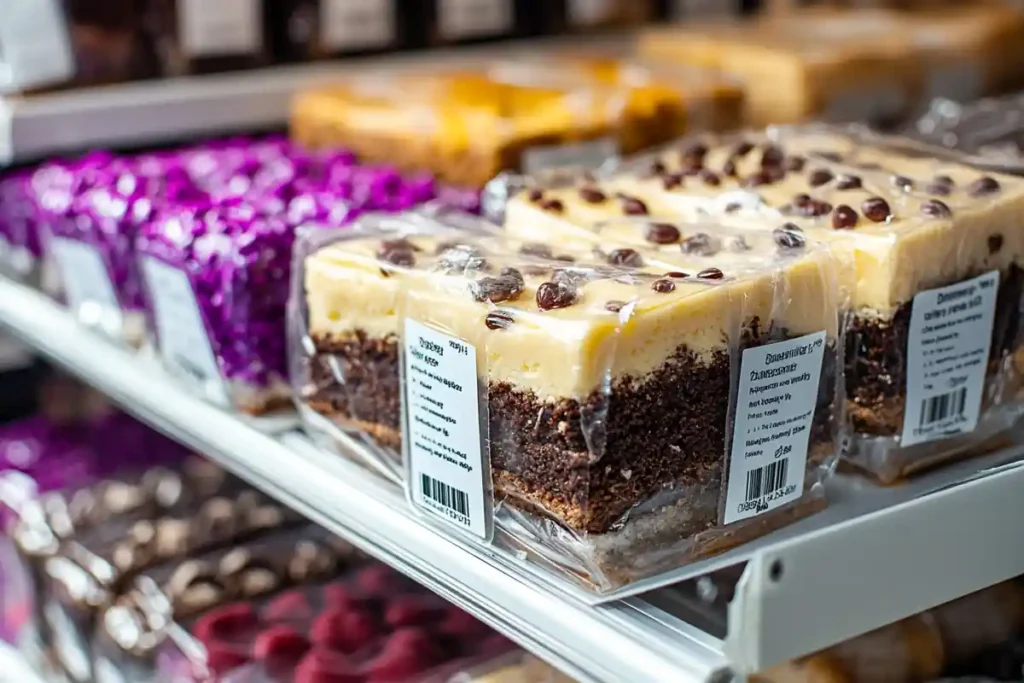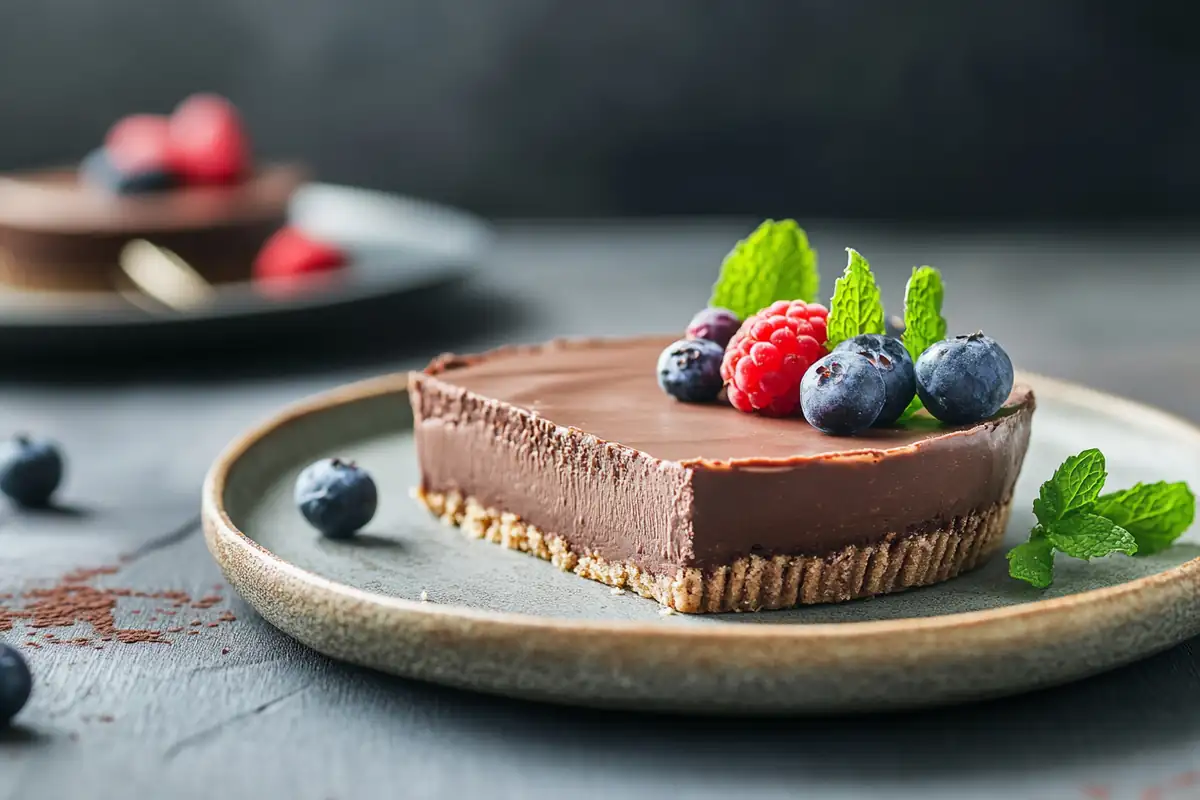What cake is best for diabetics? Indulging in cake while managing diabetes might sound like a tall order, but it’s absolutely possible with the right knowledge and choices. In this article, we’ll explore the best cakes for diabetics, discuss essential ingredients and nutritional tips, and share delicious recipes tailored to fit a diabetic-friendly lifestyle. With the right approach, enjoying dessert can still be part of a healthy and balanced diet. Let’s dive in!
Understanding Diabetes and Sweet Cravings
Understanding Diabetes and Its Dietary Restrictions
Living with diabetes often means being cautious about sugar intake and making food choices that keep blood glucose levels stable. But does that mean diabetics can’t enjoy sweet treats like cake? Absolutely not! The key lies in moderation, thoughtful ingredient swaps, and maintaining a balanced diet.
The role of sugar in diabetes is fundamental to understand. Sugars, particularly simple carbohydrates, can cause spikes in blood sugar. This is why choosing cakes made with low-glycemic ingredients is critical for anyone managing diabetes. According to the American Diabetes Association, low-glycemic foods help minimize glucose fluctuations and provide sustained energy.
Can Diabetics Eat Cake?
Let’s debunk a common myth: diabetics must completely avoid cake. The truth? They can enjoy cake, but it’s all about portion control and the type of cake they choose. By opting for cakes made with diabetic-friendly ingredients, such as almond flour and natural sweeteners like stevia, you can satisfy a sweet tooth without compromising your health.
Choosing wisely, reading labels, and knowing how ingredients affect blood sugar are essential for making informed dessert choices.
Why Satisfying Sweet Cravings is Important for Diabetics
Believe it or not, denying sweet cravings completely can backfire. Cravings left unchecked often lead to overindulgence later. Instead, enjoying a small slice of a diabetic-friendly cake can help maintain emotional balance while keeping your diet in check. After all, food is more than just fuel—it’s a source of joy and comfort.
Additionally, using nutrient-dense ingredients like almond flour, unsweetened cocoa, or whole grains can make desserts not only delicious but also nutritious.
Features of Cakes Suitable for Diabetics
Key Ingredients in Diabetic-Friendly Cakes

Creating a diabetic-friendly cake isn’t just about skipping sugar; it’s about building flavor and texture with the right ingredients. From alternative sweeteners to nutrient-rich flours, the possibilities are endless for crafting desserts that are both delicious and suitable for managing diabetes.
Low-Glycemic Sweeteners
Sweeteners play a pivotal role in creating cakes for diabetics. Replacing refined sugar with low-glycemic sweeteners like stevia, erythritol, or monk fruit reduces blood sugar spikes without sacrificing sweetness. These alternatives are natural, calorie-free, and widely available, making them perfect for guilt-free indulgence. Learn more about low-glycemic sweeteners for baking to explore your options.
Whole Grain or Almond Flour
Flour might not seem like the culprit, but traditional all-purpose flour is high in carbs and has a significant impact on glucose levels. Instead, try almond flour, coconut flour, or whole-grain flour. These nutrient-dense options are lower in carbohydrates, higher in fiber, and add a rich, nutty flavor to your cake. Almond flour, in particular, is a superstar in low-carb baking for its moist texture and protein content.
Healthy Fats and Dairy Substitutes
Healthy fats are another essential component of diabetic-friendly cakes. Use unsweetened Greek yogurt, avocado oil, or coconut oil instead of butter. These alternatives not only enhance the cake’s texture but also reduce saturated fat, aligning with heart-healthy guidelines for diabetics. For dairy substitutes, plant-based options like almond milk or oat milk are excellent for reducing sugar content without losing flavor.
Nutritional Guidelines for Diabetic Cakes
When designing a cake for diabetics, it’s important to keep the nutritional balance in check. Aim for:
- Low carbohydrates: Ideally under 20-30 grams per slice.
- High fiber content: Fiber slows down the absorption of sugar into the bloodstream.
- Protein inclusion: Protein from eggs, almond flour, or yogurt adds satiety and balances blood sugar.
Popular Types of Cakes for Diabetics
Best Cake Options for Diabetics
While traditional cakes may be loaded with sugar and refined carbs, diabetic-friendly cakes come in various forms that taste just as indulgent without the unwanted sugar rush. From sugar-free options to keto-friendly and gluten-free varieties, there’s something for every preference.
Sugar-Free Cakes
Sugar-free cakes are an obvious choice for diabetics. These cakes replace traditional sugar with alternatives like stevia, erythritol, or monk fruit. What’s great about sugar-free cakes is that they offer the same sweetness without negatively impacting blood sugar. Popular options include sugar-free vanilla or chocolate cakes, which use unsweetened cocoa powder for added depth of flavor.
Keto Cakes for Diabetics
Keto cakes are a fantastic option for those managing diabetes since they are low in carbohydrates and high in healthy fats. These cakes typically use almond flour or coconut flour and incorporate natural sweeteners. A keto chocolate cake, for instance, can be a rich and satisfying treat while keeping carb counts minimal. Bonus: They’re often gluten-free as well!
Gluten-Free Cakes
Speaking of gluten-free options, these cakes are a boon for diabetics with celiac disease or gluten sensitivity. Gluten-free flour blends, almond flour, or coconut flour work beautifully in diabetic recipes. Pairing these flours with sugar substitutes creates a healthy, low-glycemic dessert that’s perfect for any occasion.
Customizing Cakes to Fit Diabetic Diets
Customizing cakes for diabetics is easier than you think. By swapping out a few ingredients, you can transform a traditional recipe into a diabetes-friendly delight.
Ingredient Swaps:
- Replace white flour with almond or coconut flour.
- Use unsweetened applesauce or Greek yogurt to add moisture without sugar.
- Incorporate dark chocolate (70% cocoa or higher) instead of milk chocolate.
Adjust Serving Sizes:
Portion control is crucial. A small slice paired with fiber-rich sides like fresh berries can help balance the overall glycemic load of the meal.
Recipes for Diabetic-Friendly Cakes
Quick and Easy Diabetic Cake Recipes

Baking at home is one of the best ways to ensure your cake fits your dietary needs. When you’re in control of the ingredients, you can indulge without worrying about hidden sugars or unnecessary carbs. Below are some simple yet delicious recipes for diabetic-friendly cakes.
Low-Carb Chocolate Cake Recipe
This rich and decadent chocolate cake is sweetened with erythritol and uses almond flour for a low-carb twist.
Ingredients:
- 2 cups almond flour
- 1/2 cup unsweetened cocoa powder
- 1/2 cup erythritol or monk fruit sweetener
- 4 large eggs
- 1/3 cup unsweetened almond milk
- 1/4 cup coconut oil, melted
- 1 tsp vanilla extract
- 1 tsp baking powder
Instructions:
- Preheat the oven to 350°F (175°C) and grease an 8-inch round cake pan.
- Mix almond flour, cocoa powder, erythritol, and baking powder in a bowl.
- In a separate bowl, whisk eggs, almond milk, coconut oil, and vanilla. Combine the wet and dry ingredients.
- Pour the batter into the pan and bake for 25-30 minutes. Let it cool before serving.
Sugar-Free Vanilla Cake Recipe
Perfect for birthdays or special occasions, this cake is light, fluffy, and completely sugar-free.
Ingredients:
- 1 1/2 cups coconut flour
- 1 cup erythritol
- 6 eggs
- 1/2 cup unsweetened Greek yogurt
- 1/2 cup unsweetened almond milk
- 1/3 cup coconut oil
- 2 tsp vanilla extract
- 1 tsp baking soda
Instructions:
- Preheat the oven to 350°F (175°C) and line a 9-inch cake pan with parchment paper.
- Combine coconut flour, erythritol, and baking soda in a mixing bowl.
- In another bowl, whisk eggs, Greek yogurt, almond milk, coconut oil, and vanilla.
- Gradually fold the wet ingredients into the dry mixture. Pour the batter into the prepared pan.
- Bake for 30-35 minutes, and let it cool completely before frosting.
Almond Flour Carrot Cake Recipe
For those who love carrot cake, this almond flour version is packed with flavor and diabetic-friendly ingredients.
Ingredients:
- 2 cups almond flour
- 1/2 cup erythritol or monk fruit sweetener
- 1 tsp cinnamon
- 1/2 tsp nutmeg
- 1 tsp baking powder
- 3 eggs
- 1/4 cup coconut oil
- 1/2 cup grated carrots
- 1/4 cup unsweetened crushed pineapple (optional)
Instructions:
- Preheat the oven to 325°F (165°C) and grease a loaf pan or 8-inch round pan.
- Mix almond flour, erythritol, cinnamon, nutmeg, and baking powder in a bowl.
- In another bowl, beat eggs with coconut oil. Fold in the grated carrots and pineapple if using.
- Combine the wet and dry ingredients. Bake for 30-40 minutes. Cool before slicing.
Tips for Baking Diabetic-Friendly Cakes
Pro Tips for Baking Diabetic Cakes at Home
Baking a diabetic-friendly cake requires a bit of creativity and a focus on ingredient substitutions. But don’t worry—it’s easier than you might think! Here are some expert tips to ensure your cakes are delicious, healthy, and perfectly suited for a diabetic lifestyle.
Substituting Sugars Effectively
Using the right sweeteners is crucial for maintaining sweetness without raising blood sugar levels. Opt for natural, low-glycemic sweeteners like stevia, erythritol, or monk fruit. These alternatives not only mimic the sweetness of sugar but also bake well without altering the cake’s texture. Just be sure to follow the conversion chart for your chosen sweetener, as they’re often much sweeter than regular sugar.
Avoiding Hidden Carbs
Flour is often overlooked as a source of carbs in cakes. Replace all-purpose flour with options like almond flour, coconut flour, or a gluten-free blend. These flours are not only lower in carbohydrates but also rich in protein and fiber, making your cakes more nutrient-dense. Additionally, avoid using canned or sweetened fruits, which often contain hidden sugars. Instead, go for fresh or unsweetened options.
Testing for Sweetness and Texture
Because sugar substitutes may not taste identical to regular sugar, it’s a good idea to taste the batter before baking. However, sweetness can intensify during baking, so don’t overdo it. For texture, ingredients like eggs and Greek yogurt can help maintain moisture and structure, especially when using flours like almond or coconut.
Portion Control Matters
Even when baking with diabetic-friendly ingredients, serving size is key. Cut your cake into smaller portions, and consider pairing it with a high-fiber side like fresh berries or unsweetened whipped cream to create a balanced dessert.
Additional Baking Hacks:
- Add unsweetened cocoa powder to enhance flavor in chocolate cakes.
- Mix flours (like almond and coconut) to achieve a better texture.
- Bake at slightly lower temperatures to prevent cakes from drying out.
Store-Bought Cakes for Diabetics

Evaluating Store-Bought Options
Sometimes, you may not have the time or energy to bake a diabetic-friendly cake from scratch. Fortunately, several store-bought options cater to diabetics, but choosing the right one requires careful evaluation. Understanding how to read labels and select the healthiest products is crucial for making the best choice.
What to Look for on Labels
When shopping for diabetic-friendly cakes, the nutrition label is your best friend. Pay close attention to:
- Sugar content: Look for cakes labeled as “sugar-free” or “no added sugar.”
- Carbohydrate count: Opt for cakes with low net carbs (total carbs minus fiber).
- Sweeteners: Ensure the product uses low-glycemic options like erythritol, stevia, or monk fruit instead of artificial sweeteners like aspartame, which some may wish to avoid.
- Fiber content: Higher fiber content helps offset the impact of carbs on blood sugar.
Top Brands Offering Diabetic Cakes
Some brands specialize in creating desserts that cater to those with dietary restrictions, including diabetes. Here are a few to consider:
- Swerve Sweets: Known for their sugar-free cake mixes, Swerve products use natural sweeteners and low-glycemic ingredients.
- Simple Mills: This brand focuses on clean, whole-food ingredients and offers gluten-free and low-carb baking mixes.
- Keto and Co: Perfect for those seeking keto-friendly, low-carb cake options that align well with diabetic needs.
Pros and Cons of Store-Bought Options
While convenient, store-bought cakes may not always meet your nutritional goals as closely as homemade options. They often contain preservatives or hidden carbs, so always double-check the ingredients. However, for busy schedules or last-minute needs, these options can be lifesavers.
Avoiding Common Mistakes
Common Mistakes in Choosing or Baking Diabetic-Friendly Cakes
Making a diabetic-friendly cake requires careful attention to ingredients, portion sizes, and preparation techniques. However, some common pitfalls can compromise your efforts. Here’s a guide to help you steer clear of these mistakes and create desserts that are both delicious and health-conscious.
Using High-Glycemic Sweeteners
One of the biggest missteps is using sweeteners that still spike blood sugar. Ingredients like honey, agave syrup, and even coconut sugar are often mistaken for healthy alternatives but have high glycemic indexes. Instead, opt for low-glycemic sweeteners like stevia, erythritol, or monk fruit, which provide sweetness without raising blood sugar levels.
Ignoring Portion Control
Even if your cake is made with diabetic-friendly ingredients, overeating can still cause a spike in blood sugar. Slicing the cake into smaller portions and being mindful of serving sizes ensures you stay within your dietary limits. Pairing a small slice with a fiber-rich side, such as fresh berries, can also help balance the meal.
Choosing the Wrong Flour
Refined flour is high in carbohydrates and low in nutrients, making it unsuitable for diabetics. While whole-grain flour is a better option, almond and coconut flours are superior due to their lower carb content and higher fiber levels. These flours not only stabilize blood sugar but also add richness to your cakes.
Overlooking Hidden Sugars
Store-bought cakes or pre-made mixes often include hidden sugars disguised under names like “malt syrup,” “evaporated cane juice,” or “dextrose.” Always read the label carefully to avoid these sneaky ingredients. A quick glance at the total carbohydrates section can help you assess the overall sugar content.
Not Testing Sweetness Levels
When baking at home, it’s crucial to taste-test batter or frosting made with sugar substitutes. Some alternatives like stevia are much sweeter than sugar and can result in an overly sweet or bitter cake if not measured properly. A quick taste test can save you from an unbalanced dessert.
The Role of Cakes in a Balanced Diabetic Diet
Cakes as Part of a Balanced Diet
The idea of enjoying cake while managing diabetes might seem counterintuitive, but with the right approach, it’s entirely possible. When incorporated thoughtfully, diabetic-friendly cakes can be part of a healthy and balanced diet. Here’s how to enjoy cake without derailing your diabetes management.
Moderation is Key
The golden rule for any dessert, especially for diabetics, is moderation. While a low-carb, sugar-free cake can fit into your diet, overindulging can lead to spikes in blood sugar. A small slice, served occasionally, allows you to satisfy your sweet cravings without compromising your health.
Pairing Cakes with Healthy Sides
To further minimize the glycemic impact, pair your cake with fiber-rich sides like fresh fruits or unsweetened whipped cream. For example, berries like raspberries and blackberries are low in natural sugars and packed with fiber, making them an excellent complement to your dessert.
Understanding Meal Timing and Balance
Having a slice of diabetic-friendly cake as part of a balanced meal can help mitigate blood sugar fluctuations. For instance, enjoy your cake after a meal that includes lean protein, healthy fats, and fiber. These components slow down the absorption of sugar, helping to maintain stable glucose levels.
Enjoying Without Guilt
Food is not just fuel—it’s a source of enjoyment and community. Denying yourself occasional treats can sometimes lead to overindulgence later. Allow yourself to enjoy a slice of cake, knowing that you’ve chosen ingredients that align with your health goals. This balance fosters both physical and mental well-being.
Final Thoughts on Choosing the Best Cake for Diabetics
Managing diabetes doesn’t have to mean giving up on dessert. By understanding the importance of ingredients, practicing portion control, and making informed choices, you can enjoy diabetic-friendly cakes without guilt. Whether it’s a homemade almond flour carrot cake, a sugar-free chocolate indulgence, or a store-bought low-carb option, there’s a delicious solution for every craving.
The key takeaway is that moderation and balance are essential. Choose cakes made with low-glycemic sweeteners and nutrient-dense flours, and pair them with healthy sides like fresh berries to create a complete, satisfying dessert. Baking at home offers the most control, but evaluating store-bought options carefully can also work for those busy days.
With the right approach, you can savor sweet moments while maintaining your health. So, go ahead and enjoy a slice of cake—because life’s too short not to indulge, even just a little!
FAQs: What Cake is Best for Diabetics?
Can diabetics eat sugar-free cake?
Yes, diabetics can enjoy sugar-free cake, but it’s important to watch portion sizes and ensure the cake uses low-glycemic sweeteners like stevia or erythritol. These alternatives help satisfy sweet cravings without spiking blood sugar levels.
What kind of flour is best for diabetic baking?
Almond flour, coconut flour, and other low-carb options are ideal for diabetic baking. These flours are lower in carbohydrates and higher in fiber and protein compared to traditional refined flours, making them great choices for stabilizing blood sugar.
Are keto cakes good for diabetics?
Absolutely! Keto cakes are designed to be low in carbohydrates and free from sugar, which aligns well with the dietary needs of diabetics. Ingredients like almond flour and natural sweeteners make keto cakes a fantastic option.
What sweetener is best for diabetic cakes?
Stevia, erythritol, and monk fruit are among the best sweeteners for diabetic cakes. They are natural, calorie-free, and have a low glycemic index, which means they won’t cause significant spikes in blood sugar.
How do I make a diabetic-friendly cake at home?
To make a diabetic-friendly cake, use almond or coconut flour, low-glycemic sweeteners, and healthy fats like coconut oil or Greek yogurt. Pair these with natural flavorings such as unsweetened cocoa powder or vanilla extract to enhance the taste.
Can diabetics eat cake every day?
While diabetics can occasionally enjoy cake, eating it daily is not recommended. Moderation is key, and desserts should be part of a balanced diet with careful monitoring of blood sugar levels.
